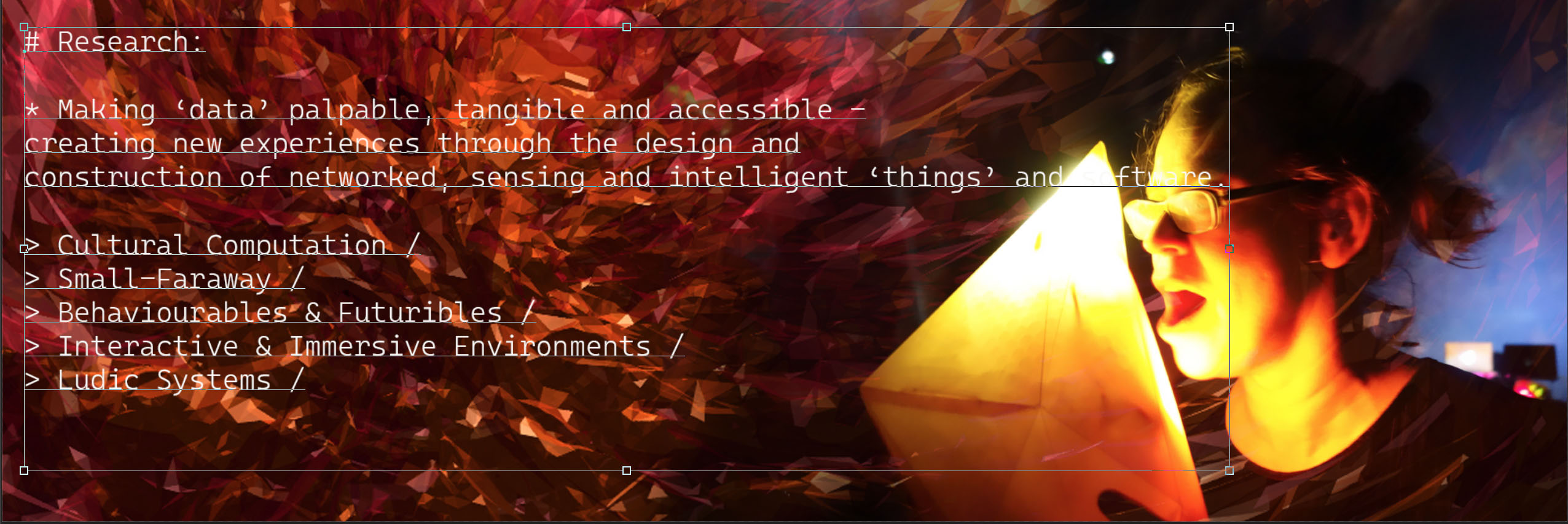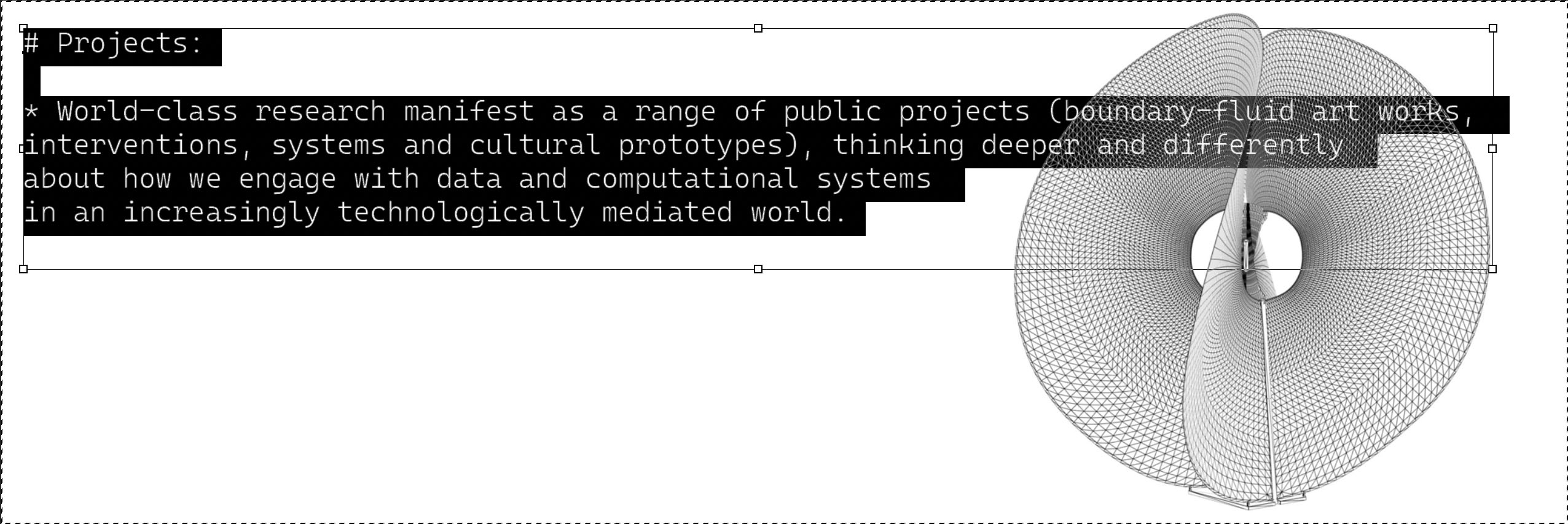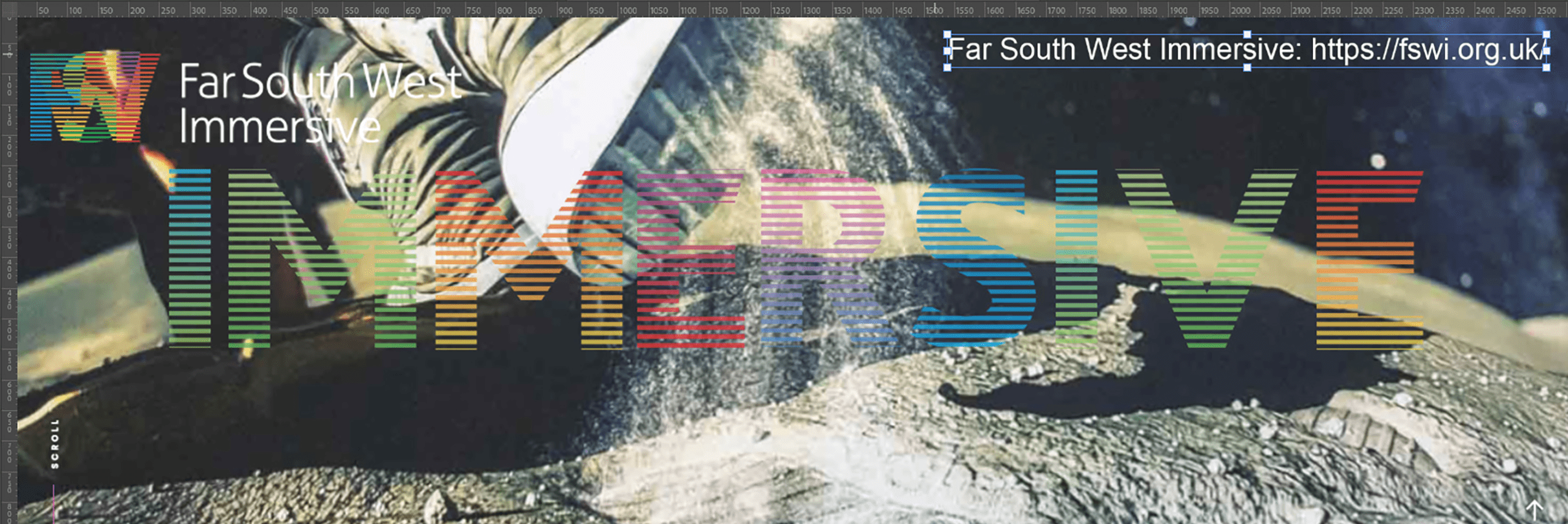Phylogeny: Thinking and making on time, place and relationship
19–21 February 2010 / Royal Botanic Garden Edinburgh
HAMER DODDS: Co-director of Melted Snow
Hamer Dodds is a freelance artist and scientist. He recently co-founded Melted Snow, a design team working in the field of science, art and interpretation.
E-mail: phylogeny@blueyonder.co.uk
Organizers/lead contributors
Chris Cottrell, independent artist
Max Coleman, Royal Botanic Garden Edinburgh
Hamer Dodds, independent artist/scientist
Gerhard Lang, independent artist
Mike Phillips, University of Plymouth
Chris Speed, University of Edinburgh
Alexandra Wortley, Royal Botanic Garden Edinburgh
Background
In October 2009 Hamer Dodds was asked by the Royal Botanic Garden Edinburgh to organize a weekend event as part of the International Year of Biodiversity initiative. The Royal Botanic Garden Edinburgh is widely regarded as being in the top four scientific gardens in the world. It is, literally, a living laboratory. This function needed to be reflected in the workshops over the weekend. The subject of the weekend’s events was phylogeny.

Symposium at the John Hope Gateway building, Royal Botanic Garden of Edinburgh.
Phylogeny is our way of understanding how all living things are connected – the biology of relationships. There are between 5 million and 100 million species on our planet. Amazing though it may seem, it is most likely that they all evolved from a pool of interbreeding ancestors existing some 3000 million years ago.
Darwin’s theory of evolution by natural selection explains how every new organism has slightly different characteristics, which may make it more or less able to survive and reproduce in a given environment. Scientists now know that these characteristics (shape, colour, behaviour, etc.) are largely determined by its genes. Differential survival in different environments propagates and accumulates these genetic differences until each lineage is considered distinct enough to be defined as a new species. Over time, the process has generated a complex network of relationships that can be depicted as a branching diagram – a phylogenetic tree.
Phylogenetic relationships are inferred simply by comparing the characters of organisms. In the past this meant morphological characteristics; nowadays it often means DNA sequences, but the principle is the same: a process of considering which of all the possible phylogenetic trees matches best to the distribution of characteristics in the organisms under consideration. For a small number of species, this process is relatively easy – if you have three species, there are only three possible ways (Fig. 1) they can be related (X and Y are more closely related to one another than to Z, X and Z are more closely related to one another than to Y, or Y and Z are more closely related to one another than to X). For four species there are fifteen possible phylogenies (Fig. 2). For seven there are over ten thousand! This is the reason why most phylogenetic analyses nowadays are carried out using a computer.
The intervention of the computer to support the interpretation and comparison of sequences presents an interesting interface to the plants. Huge data trees become complex signatures for the actual plant and databases become new environments with which to study them. The combination of the constructed Royal Botanic Garden that dates back to the seventeenth century and the digital vocabularies of phylogeny offered an interesting context in which to invite participants. The lens of phylogeny reframed the actual garden as an instrument and allowed discussions and events to explore our complex contemporary relationship with plants.
It was important that the events of the weekend would neither compromise the scientific integrity nor the understanding of the work by both artists and scientists. Dr Alexandra Wortley and Dr Max Coleman provided both the scientific integrity and flexibility of thought needed to achieve these requirements. We felt that it was important to engage the community that visited the garden with a variety of ideas that relied ultimately on the concept of phylogeny. This was achieved with workshops for young children, discussions between artists and scientists, phylogeny eating experiences, interactive art sessions and an exhibition of artworks. The links between scientific data generated by the work of the garden should be explored wherever possible.
Dr Cathy Southworth and Dr Jan Barford, from the University of Edinburgh, developed activities related to phylogeny for primary-school children and Louise Ollie supplied insights into practical art whilst the artist Gerhard Lang installed an artwork in the garden. It was important that all activities were open to everyone. The mini talks allowed for the idea of phylogeny to be used in a wider context than its inventor, Ernst Haeckel, was prone to do. Holding these discussions within a working scientific establishment acted as a catalyst to new ways of thinking as well as providing a beautiful space for walking and contemplating.
Workshops/Events
1. Phylogeny walk (Plant Routes)
2. Root vegetable phylogeny prints
3. Drawing root vegetable phylogenies
4. Phylogeny artworks
5. Installation by Gerhard Lang
6. Practical symposium
7. Kit set constructing phylogenies
8. Alignment activities
9. Mini talks
Phylogeny Images:

Elise Campbell, artist and landscape architect, responding to the discussion through artefacts.

Gerhard Lang introducing his work and interest in biology and form.

Hamer Dodds. Hamer Dodds

Vegetables used in the kids workshop as stamps to construct simple phylogenetic trees.

Gerhard Lang’s installation Flowres of the Forrest recalls the seventeenth-century Scottish folk tune and the botanist George Forrest whose international expeditions contributed to the Royal Botanic Gardens collection.






You must be logged in to post a comment.